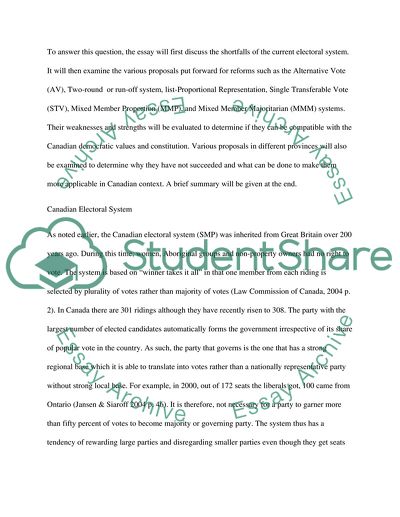Cite this document
(“Electoral Reforms in Canadian Provinces Essay Example | Topics and Well Written Essays - 2000 words”, n.d.)
Retrieved from https://studentshare.org/history/1628945-a-number-of-canadian-provinces-have-considered-changes-to-their-electoral-systems-but-none-has-been-successful-examine-the-proposals-for-reform-and-provide-an-assessment-of-why-they-have-not-succeeded
Retrieved from https://studentshare.org/history/1628945-a-number-of-canadian-provinces-have-considered-changes-to-their-electoral-systems-but-none-has-been-successful-examine-the-proposals-for-reform-and-provide-an-assessment-of-why-they-have-not-succeeded
(Electoral Reforms in Canadian Provinces Essay Example | Topics and Well Written Essays - 2000 Words)
https://studentshare.org/history/1628945-a-number-of-canadian-provinces-have-considered-changes-to-their-electoral-systems-but-none-has-been-successful-examine-the-proposals-for-reform-and-provide-an-assessment-of-why-they-have-not-succeeded.
https://studentshare.org/history/1628945-a-number-of-canadian-provinces-have-considered-changes-to-their-electoral-systems-but-none-has-been-successful-examine-the-proposals-for-reform-and-provide-an-assessment-of-why-they-have-not-succeeded.
“Electoral Reforms in Canadian Provinces Essay Example | Topics and Well Written Essays - 2000 Words”, n.d. https://studentshare.org/history/1628945-a-number-of-canadian-provinces-have-considered-changes-to-their-electoral-systems-but-none-has-been-successful-examine-the-proposals-for-reform-and-provide-an-assessment-of-why-they-have-not-succeeded.


